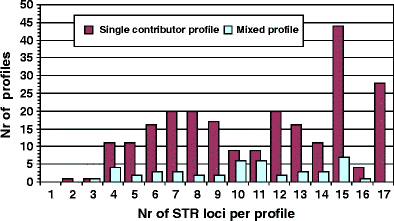A sensitive method to extract DNA from biological traces present on ammunition for the purpose of genetic profiling
- PMID: 20419382
- PMCID: PMC3115141
- DOI: 10.1007/s00414-010-0454-4
A sensitive method to extract DNA from biological traces present on ammunition for the purpose of genetic profiling
Abstract
Exploring technological limits is a common practice in forensic DNA research. Reliable genetic profiling based on only a few cells isolated from trace material retrieved from a crime scene is nowadays more and more the rule rather than the exception. On many crime scenes, cartridges, bullets, and casings (jointly abbreviated as CBCs) are regularly found, and even after firing, these potentially carry trace amounts of biological material. Since 2003, the Forensic Laboratory for DNA Research is routinely involved in the forensic investigation of CBCs in the Netherlands. Reliable DNA profiles were frequently obtained from CBCs and used to match suspects, victims, or other crime scene-related DNA traces. In this paper, we describe the sensitive method developed by us to extract DNA from CBCs. Using PCR-based genotyping of autosomal short tandem repeats, we were able to obtain reliable and reproducible DNA profiles in 163 out of 616 criminal cases (26.5%) and in 283 out of 4,085 individual CBC items (6.9%) during the period January 2003-December 2009. We discuss practical aspects of the method and the sometimes unexpected effects of using cell lysis buffer on the subsequent investigation of striation patterns on CBCs.
Figures


References
Publication types
MeSH terms
Substances
LinkOut - more resources
Full Text Sources
Other Literature Sources

